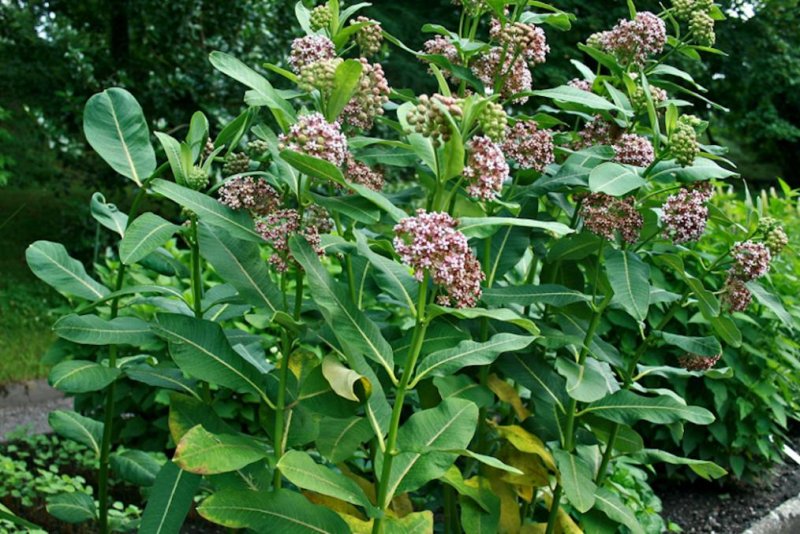The milkweed species Asclepias syriaca is a favorite of milkweed butterfly larvae. Photo by Drexel University
Feb. 26 (UPI) -- While plants may deploy a combination of defenses agains their predators, they don't accumulate them ad infinitum. New research suggests plants abandon outdated defenses in favor of new ones.
When scientists analyzed the genome of the Apocynaceae lineage, the group flowering plants commonly known as the dogbane family, they found a gene linked with the production of a toxic class of chemicals, called pyrrolizidine alkaloids, has become nonfunctional at least four different times in the family's evolutionary past.
Researchers confirmed 75 percent of modern Apocynaceae species are descended from the same alkaloid-producing ancestor, and yet, most of the plants no longer generate the toxin.
The latest research, published this week in the journal New Phytologist, suggests the Danainae family of butterflies, commonly called milkweed butterflies, are the reason why. The larval form of every Danainae species feeds on Apocynaceae plants.
Not only are milkweed butterfly larva immune to the alkaloid toxin, some studies suggest the butterflies are attracted to it. Scientists believe Danainae species evolved a way to use the plants' toxins for their own defenses.
Instead of wasting energy producing pyrrolizidine alkaloids, milkweed species have diverted resources to new defenses.
"Apocynaceae species of this lineage produce a number of different classes of defensive chemicals, including cardenolides and other types of alkaloids," Tatyana Livshultz, an assistant curator of botany at the Academy of Natural Sciences of Drexel University, said in a news release. "It has been shown that cardenolides are at least partially effective defenses against adapted herbivores such as the monarch butterfly, the most familiar species of Danainae to Americans."
Not all milkweed species have stopped producing pyrrolizidine alkaloids, which suggests the chemical still works against predators more menacing than milkweed butterflies.
Understanding when and how plants evolved and abandoned defenses in response to the herbivores that prey upon their leaves can help scientists model the process of co-evolution.
"Co-evolution explains how interactions between species can drive the origin of novelty and diversity," Livshultz said.
Research into co-evolution can also yield new medical compounds as strategies for protecting crops from damaging pests.















